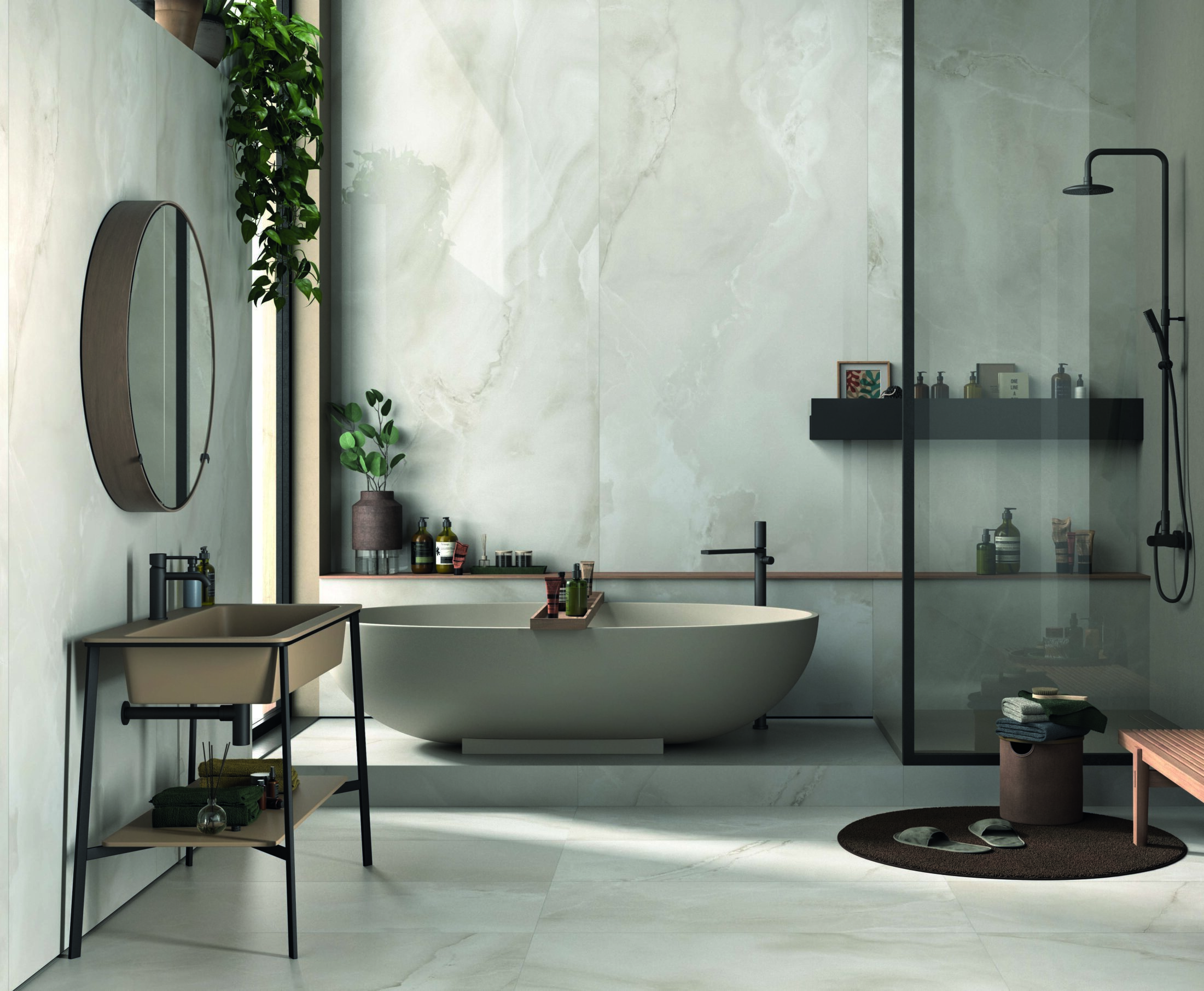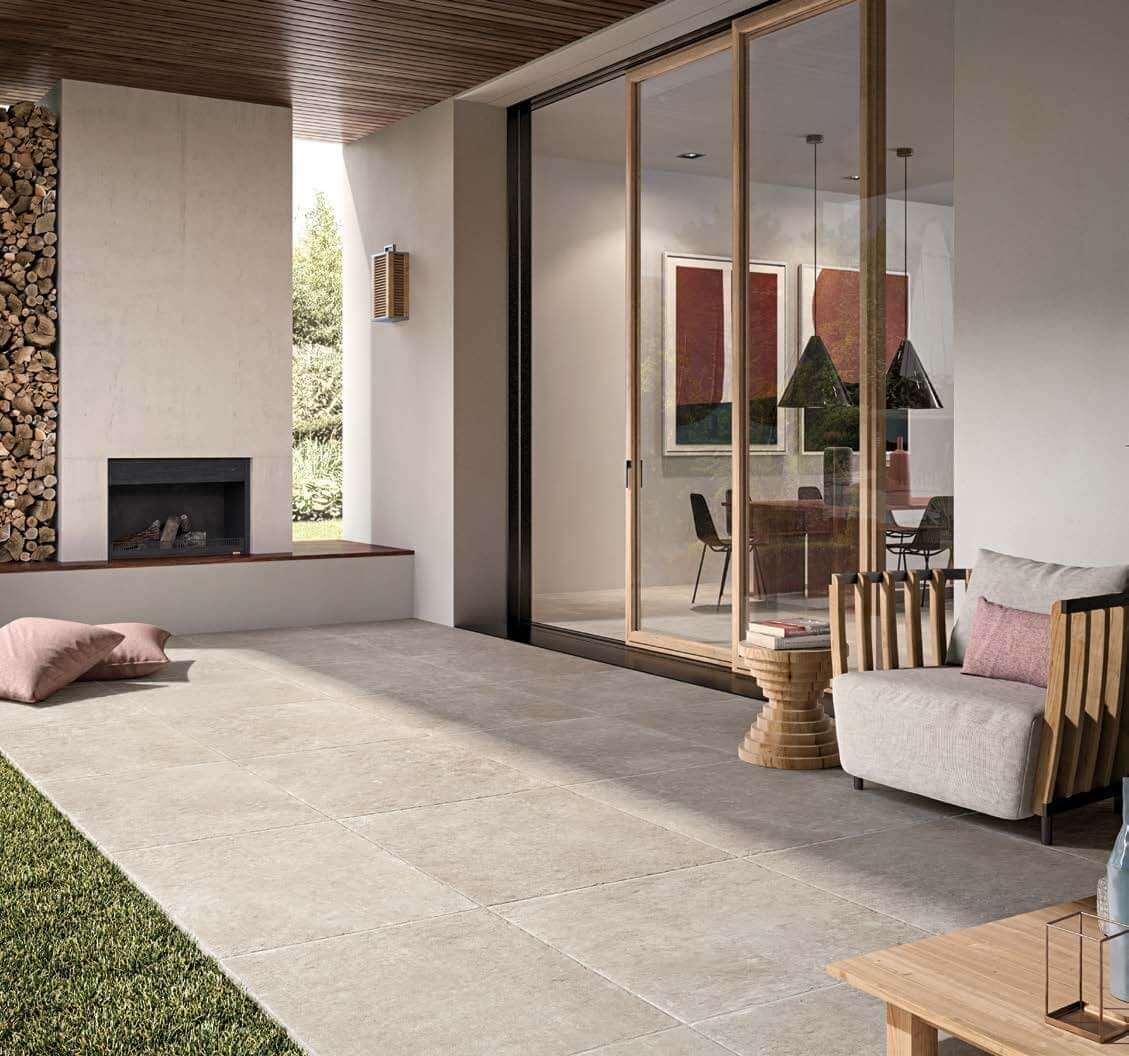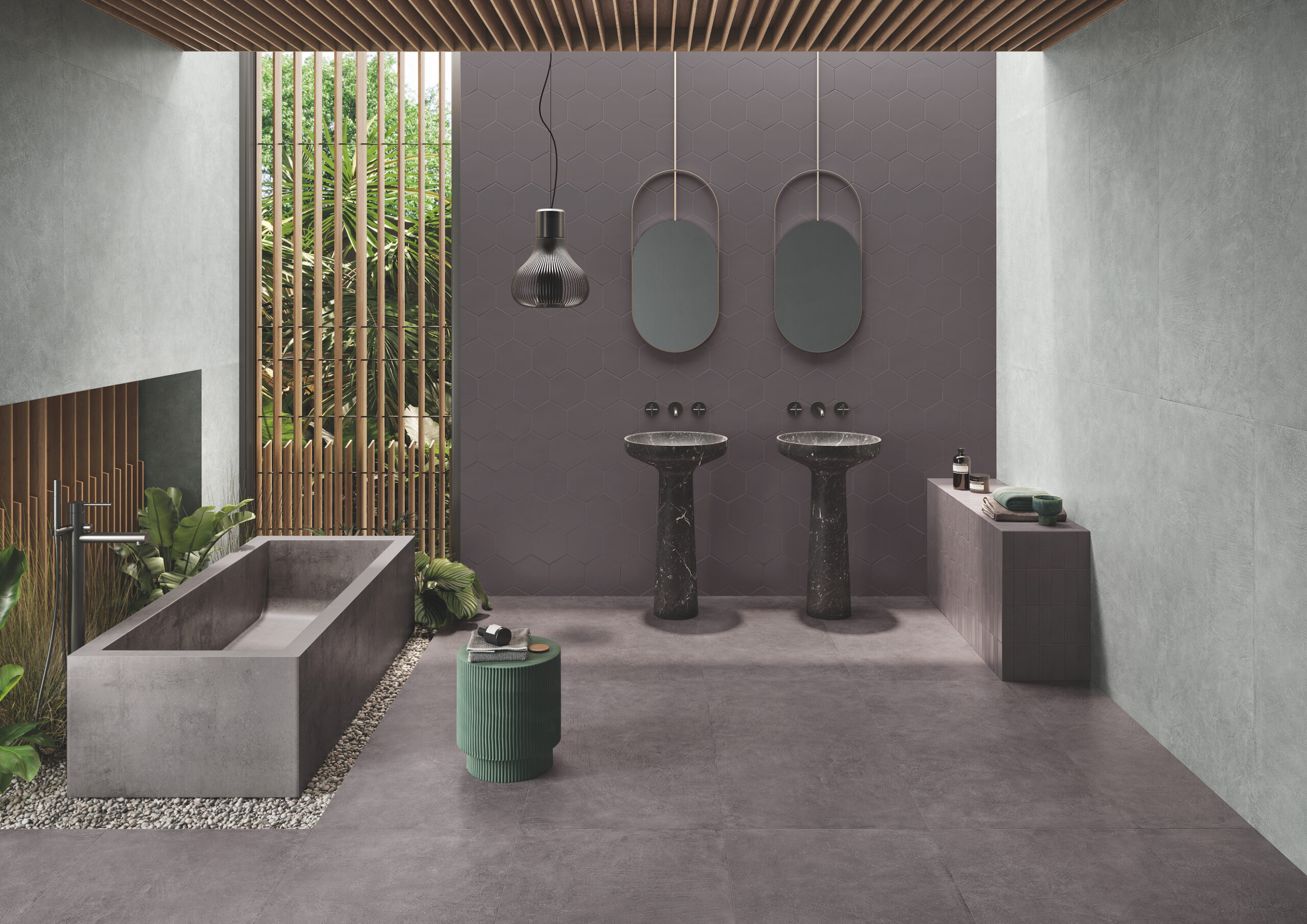If you’ve ever shopped for tiles, you may have heard the phrase “tile slip rating” thrown around – but what does it actually mean, and why does it matter?
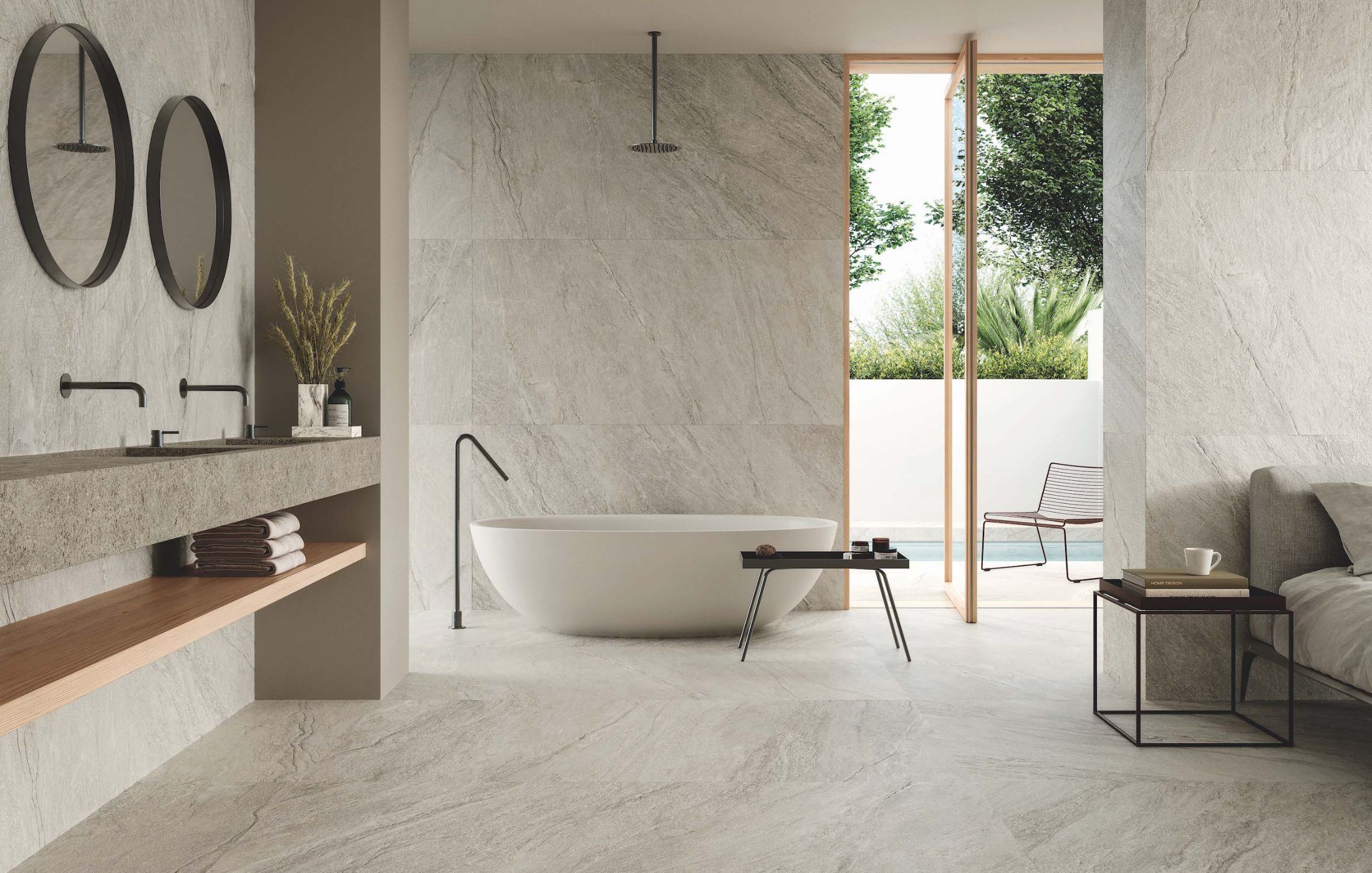
Tiles come in different shapes, sizes, colours, materials and finishes, which is why tile ratings are important. Tile slip ratings are international technical evaluations that are used to help you make an informed decision about which tile is the best fit for your needs.
Among other things, tiles are best known for their hardness and smoothness. However, some tiles are more textured than others, making them more suitable for wet areas such as bathrooms, laundries and swimming pool surrounds. A slip rating helps to make it easy when determining whether a tile is suitable for its intended application.
The most common slip resistance tests in Australia are:
The ‘Pendulum Test’ measures the friction between a wet tile and a standard shoe. The slip rating ranges from P0 to P5. The higher the number, the lower the risk of slipping.
Tiles with a P2 or P3 slip rating are suitable for indoor flooring while tiles with a P4 or P5 rating have a very low slip risk when wet and are therefore suitable for outdoor use, including around a swimming pool.
An Oil-Wet Ramp Test involves laying the tiles on a ramp and applying lubricating oil to the surface of them. The test is conducted by a person walking on an oiled surface wearing cleated safety boots while being held by a harness. The angle of the ramp is adjusted until the individual slips, generating the R-Value and ranges from R9 to R13. The higher the number, the lower the risk of slipping.
Tiles with R9 or R10 are mainly used in internal spaces such as kitchens and bathrooms, while R11 and above is suitable for outdoor spaces, including around a pool. Most of our porcelain floor tile ranges offer the same look in both an internal and external slip resistance so you can create a seamless look from inside to outside, like our new Vibes series pictured here.
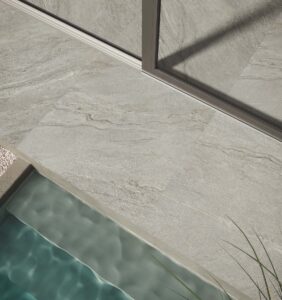
Cleaning is an important part of maintaining an appropriate level of slip resistance. Tiles with a high slip resistance, such as P5 or R11, generally have a more textured surface and more effort may be required for cleaning. This is because the nature of the tile surface is to be ‘grippy’ so soap scum or dirt grips much easier to the surface of the tile.
See our Cleaning Guide for more information on maintaining your tiles.
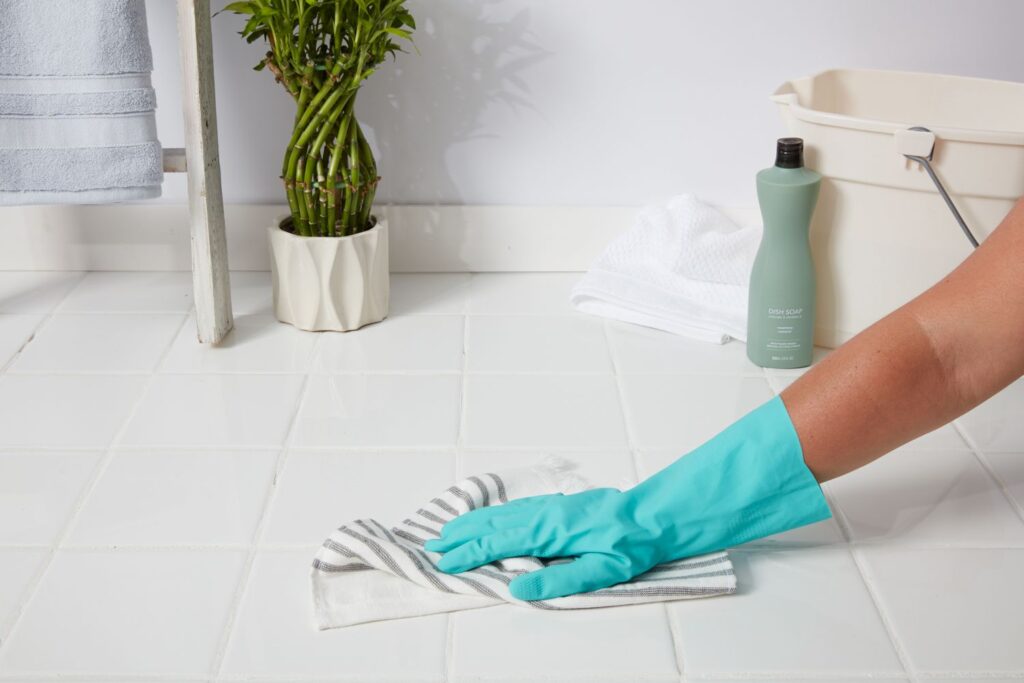
Our skilled team can assist you to find the right tile for your next project as as well as assist with any design advice or technical know how. If you would like further information on the right tile slip rating for your project, feel free to contact us today.
